How to Setup Conversion Tracking on Adwords
Server-side Tag Manager allows you to move your Google Ads conversion tracking tags from the webpage to server, which will help improve page load time and increase the accuracy of conversion tracking. Moving Adwords tags onto a server will reduce the amount of code that needs run in the webpages and aid with performance issues for slower internet connections as well!
In this article, I'll show you how to set up Google Ads (AdWords) conversion tracking using Google Ads tag for the Google Tag Manager server container.
Google Ads conversion tracking is a must if you want to have enough data to analyze your ad campaign results and give Google machine learning algorithms more information about your business goals. Google's ML will use conversion data for smart bidding and showing your ads to the users most likely to convert.
It means that you need to specify these actions in Google Ads to track all valuable actions users can do on your site. I suggest adding not only purchases as conversions in AdWords. You might also set up micro-conversions such as add to cart, form submit, etc. You can select conversion action for each campaign separately inside the campaign settings. This conversion action will be included in the 'Conversions' column and will be used for Smart Bidding.
Conversion tracking inside Google Ads (AdWords) account is crucial because it shows you which search terms, keywords, ads, or campaigns have the highest ROAS or lowest cost/conversion.
The main benefits of adding conversions to AdWords are:
-
A better understanding of which keywords, ads, or extensions are working (and which ones are not).
-
More valuable data that you can use to optimize your ad campaigns.
-
Better insights into how to optimize your ads for boosting ROAS.
-
Ability to test smart bidding through Google Machine Learning algorithms.
Google released Google Ads Conversion tracking and Conversion linker tags for the Google Tag Manager server container in July 2021! You can now get more out of your Adwords account with the new change to server-side tracking. This means that you will have access to more reliable server tracking, making conversion data accurate!
Google Ads conversion tracking works only based on Google analytics 4 tag, meaning that is you want to set up ss Google Ads, you should configure server-side GA4. As opposite to Facebook, Google Ads do not support deduplication. So you should use either web or server tracking.
3. Check the way you added transport URL to the GA4 configuration tag in the Web container. Enable Send to server container and add your tagging server URL.
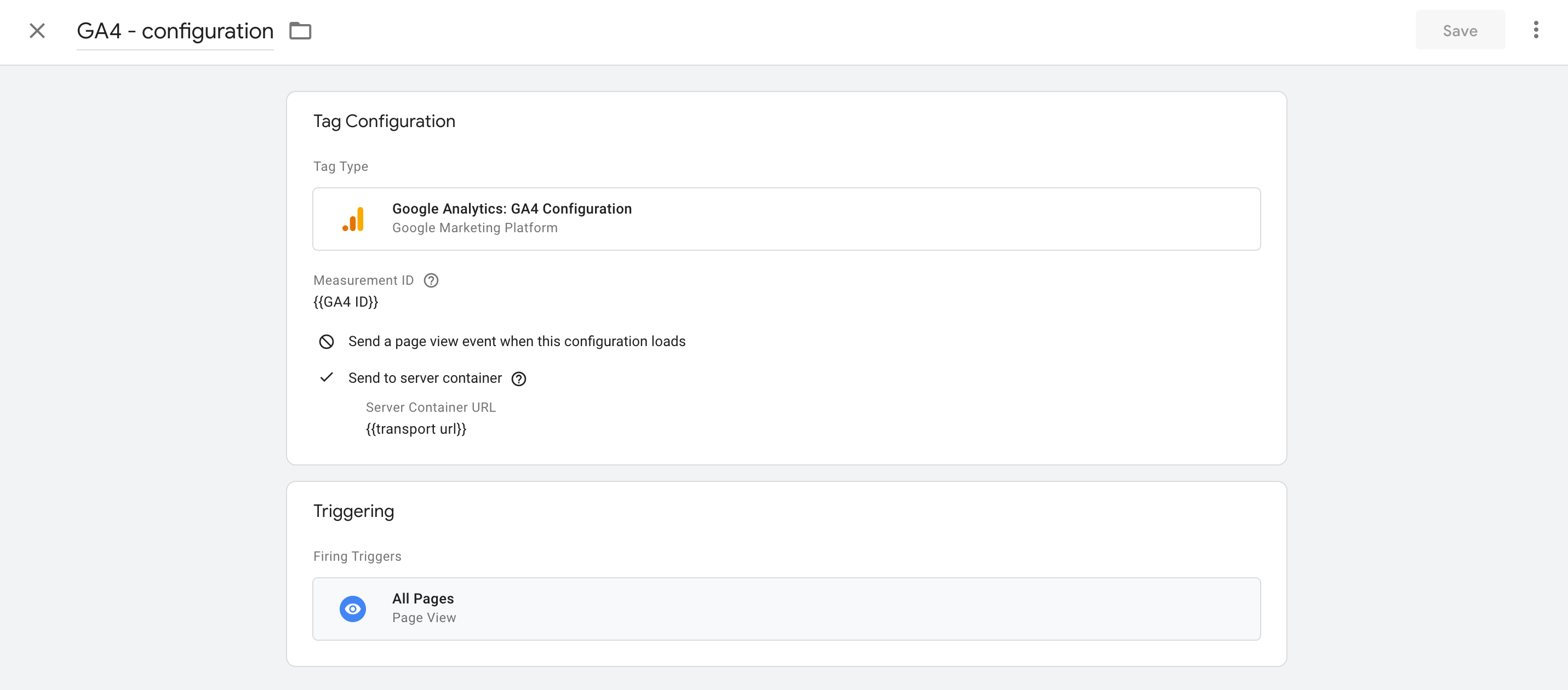
4. In the Server container set up the Conversion Linker tag. This tag should trigger on all pageviews.

5. Create a new Google Ads Conversion Tracking tag in the Server container -> add Conversion ID and Conversion Label similarly to the web Adwords tag setup. Then you have an option to add Product and User Data. (looks very similar to how Facebook conversion API works). If you send user and product data from the web to the server, then you can enable these checkboxes and select event data as a data source. My Adwords server conversion triggers on the purchase event.
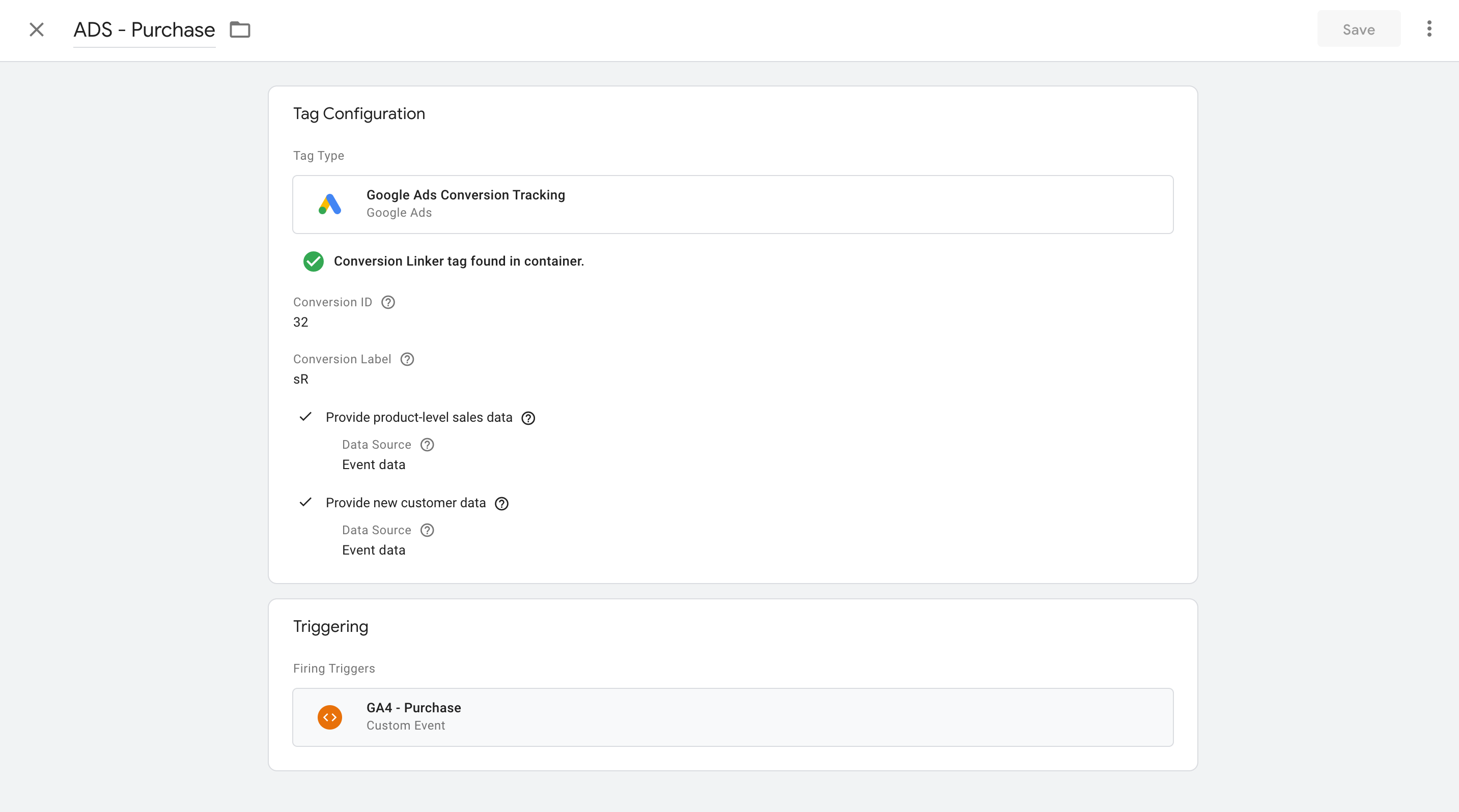
6. That's it for the server container.
7. First of all, test that the Google Ads Conversion tag triggered in the server container and the request it sent is correct.
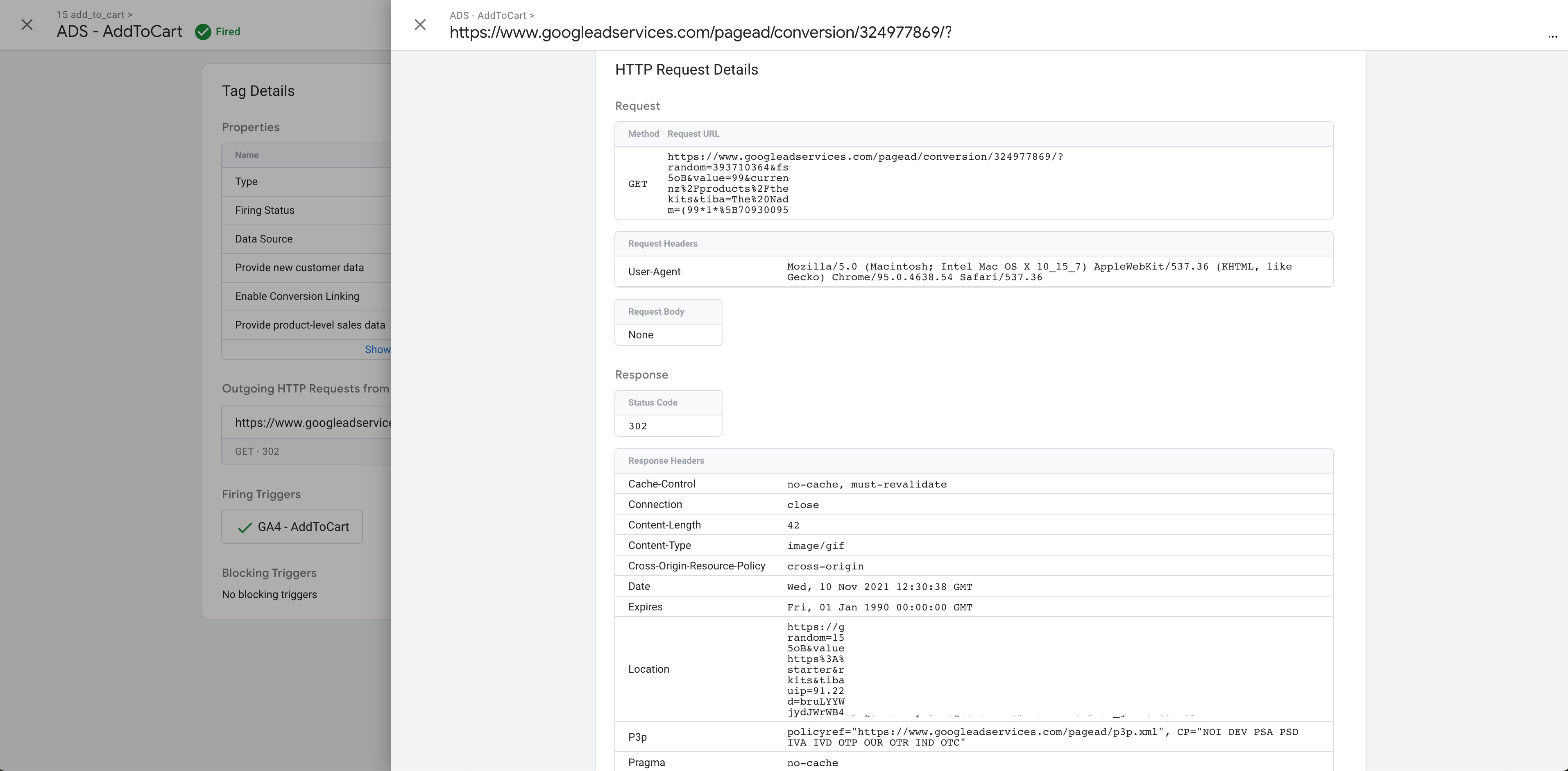
8. Check that the FPGCLAW cookie was added. It will work if you add the gclid parameter to the URL.

!
Important
Update July 2021: Google released Google Ads and Conversion Linker tags for the Google Tag Manager server container. Using these tags is the right way to set up Adwords ss tracking. I've added a guide on how to use these new tags. You can find it in this article.
Let's say you decided to move your Universal Analytics tracking to the server-side. You have campaigns running in Google Ads and want to move AdWords conversion tracking to a server-side as well. The bad news is that Google doesn't have a native tag for AdWords conversion tracking inside the Google Tag Manager server container. I'm sure they will release it in the nearest future. (Google released Adwords ss tags in July 2021)
The good news is that you can add server-side AdWords conversion tracking by exporting goals from the server-side Universal Analytics (or GA4) account to Google Ads.
The ability to export goals is only one of the main advantages of linking Google Analytics with Google Ads (AdWords). Here are some other benefits you get:
-
Ability to compare your Google Ads results with other traffic sources.
-
Importing Google Analytics engagement metrics into AdWords (such as bounce rate, avg session duration, etc.)
-
Receiving full data in the Analytics Multi-Channel Funnels report.
To set up server-side conversion tracking in AdWords, you need to have these things implemented:
3. Goals are created inside Google Analytics.
If your website fits the mentioned requirements, follow this step-by-step guide to set up server-side conversion tracking in AdWords.
1. Link Google Analytics and Google Ads accounts. To do that, open your Google Ads account, click Tools & Settings -> Linked accounts -> Choose Google Analytics (UA) -> Find the corresponding Google Analytics and click Link. If you don't see a needed Google Analytics account, make sure that the Gmail account you are using inside AdWords has access to Google Analytics that you want to link to this AdWords account.
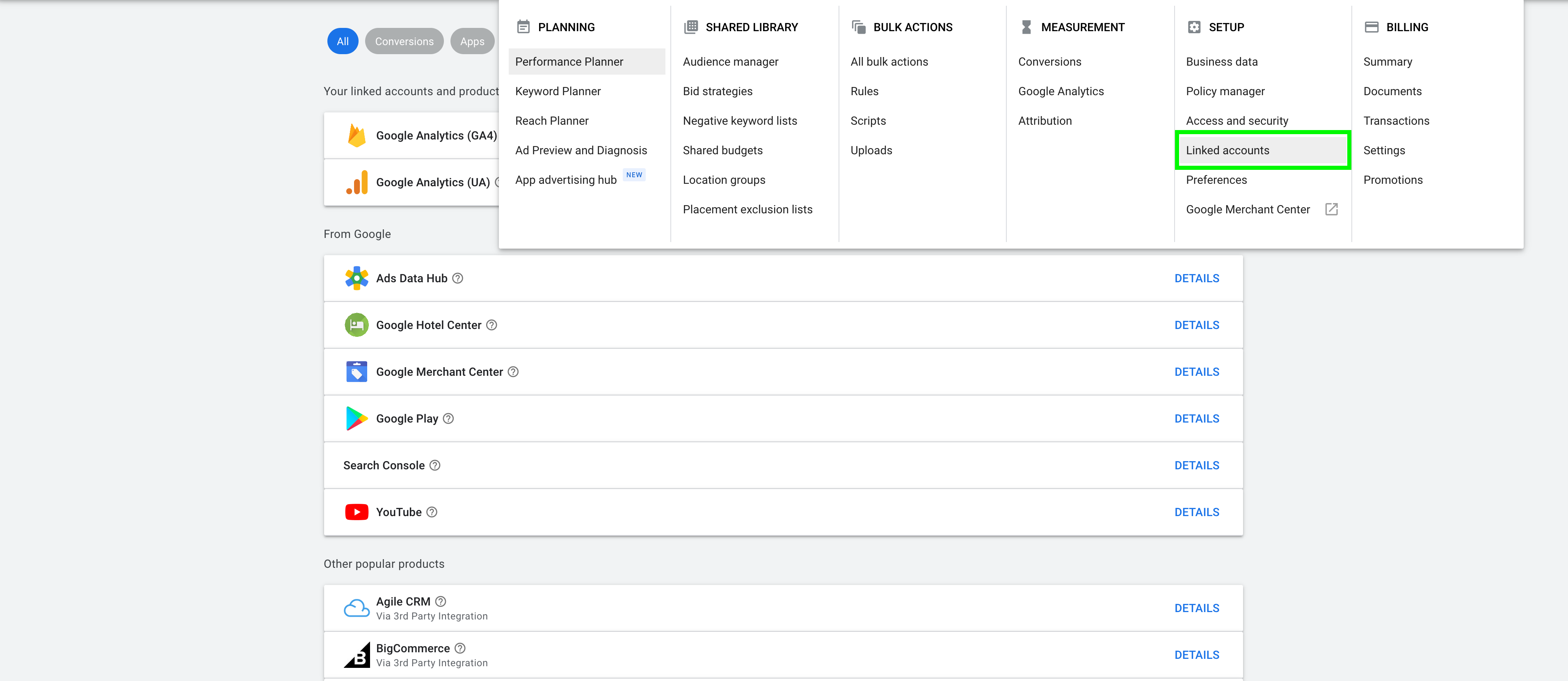
2. Now you need to export Google Analytics goals into AdWords. To do that, click Tools and Settings -> Conversions -> Click "+" -> Choose import -> Choose Google Analytics (UA) -> Click Continue -> Choose Google Analytics Goals that you want to add to Google Ads.

3. You can export multiple goals from Google Analytics to Google Ads. There are settings inside Google Ads conversions that allow you to specify which conversions you want to include in the 'Conversions' column.
4. If you exported several conversions from Google Analytics to AdWords and want to see each conversion result, you can create a custom column. To do that, click on columns button on the right side -> modify columns -> scroll to the bottom and click on the custom columns -> click "+ custom column" -> add conversion name -> inside formula type conversions -> on the right side, under the Segment -> Click Conversions -> Conversion action -> Choose conversion that you want to segment -> Click Save.
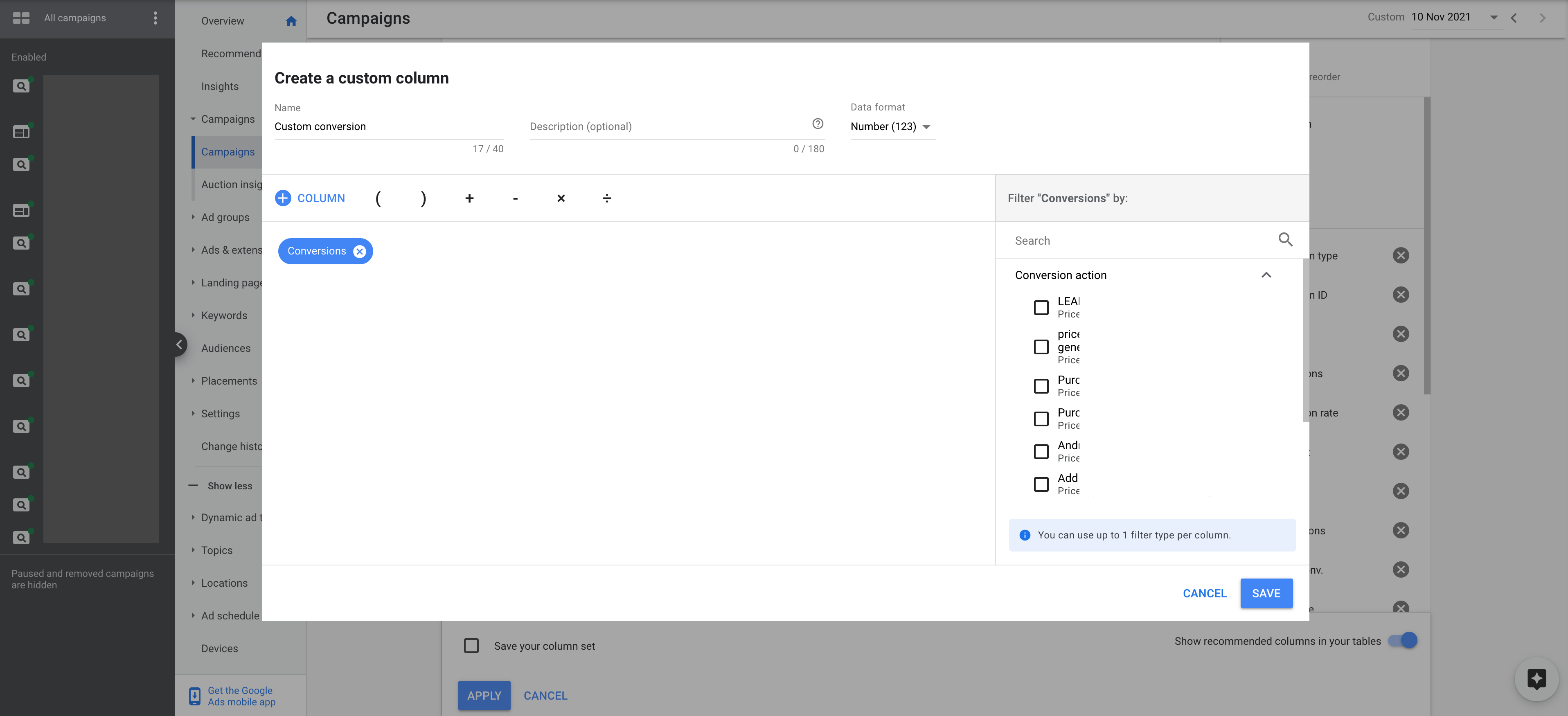
There is also an ability to share Google Analytics audience/segments with AdWords. Inside Analytics, you can segment your site users based on their behavior, language, location, conversions, etc.
You can use these audience lists inside Google Ads as a target audience for your remarketing campaign or create a similar audience for your prospecting campaigns.
1. Open Google Analytics account and click Admin. Under property click Audience Definition -> Audiences.
2. Click add a destination and choose your Google Ads account -> Enable.
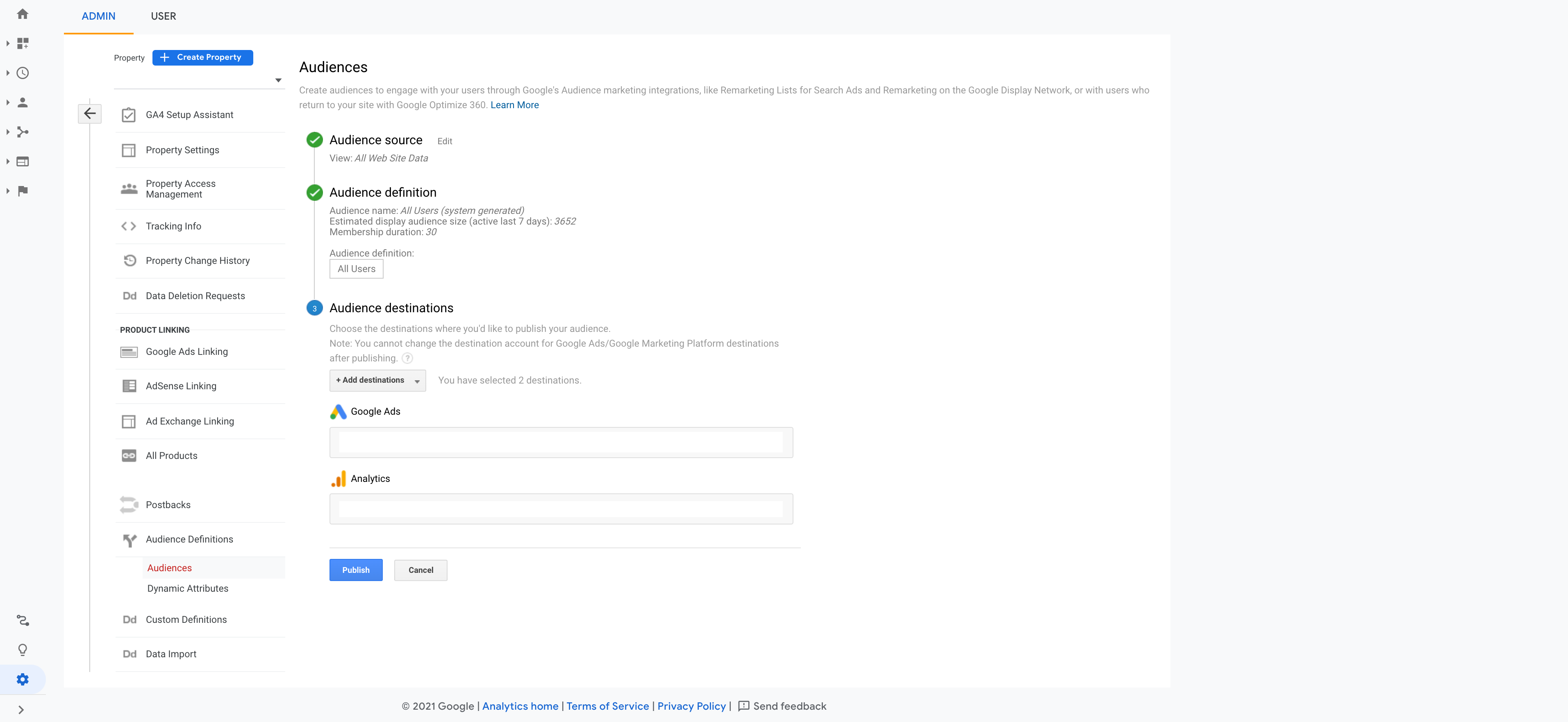
3. You can create audiences based on pages users visited, events they completed, device, traffic source, etc. To do that, click new audience -> under audience definition click edit, and choose condition for segmenting your audience.
4. Once you specified the audience condition, click Apply, add audience name, and select AdWords as a destination.
Setting up server side-tracking in Google Ads is not a difficult process, but it does take some time. You can set up this type of tracking by using the Google Ads tag for the server container or ss Google Analytics.
If you need help setting up either one, don't hesitate to reach out by email agency@stape.io! We have experience with both methods and would be happy to provide an estimate on how much it will cost if you are interested in our services.
Do any of these sound like something that could work for you? Let us know which method sounds best from the ones discussed today or let us know what your needs are so we can find the right solution for you.
How to Setup Conversion Tracking on Adwords
Source: https://stape.io/blog/server-side-conversion-tracking-in-google-ads-adwords